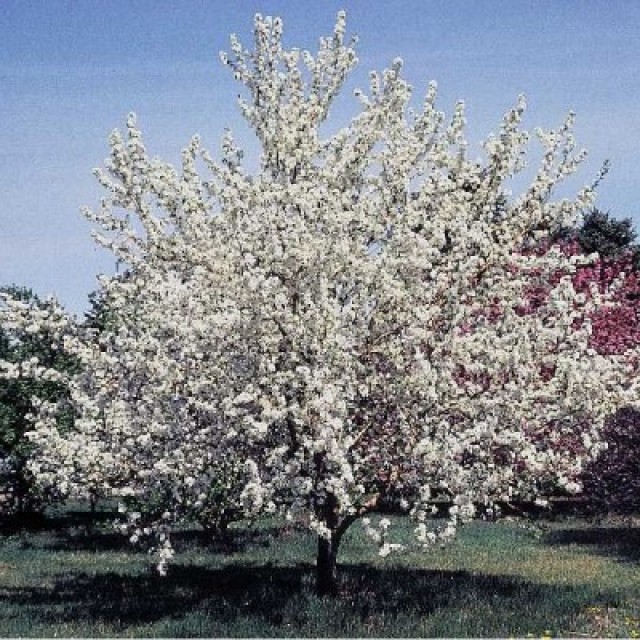COMMON NAME
Apple
SCIENTIFIC NAME
Malus pumila
ALSO KNOWN AS
Common apple, Paradise apple
Plant family
Rose (Rosaceae)
Plant group
Deciduous Trees and Shrubs
The common apple was introduced to North America and is typically small deciduous tree that can grow up to 50 feet tall in the wild.
997 reports
392+
OBSERVERS
997+
OBSERVATIONS
Identification hints
There are many subspecies and varieties of apple trees found across the United States. The common apple is distinguished by its tough rounded leaves which can be downy on the underside. The leaves appear rolled as they emerge from buds. Young twigs often are hairy.
Did you know?
Apple trees are planted in orchards for agricultural purposes and also as ornamentals. The original ancestors of the common apple tree came from central Asia and were first domesticated between 4,000 and 10,000 years ago. In North America, they often naturalize in moist sites with good soils, or can be indicators of old homesteads or settlements.
DISTRIBUTION IN TH U.S.
Alabama
,
Arkansas
,
California
,
Colorado
,
Connecticut
,
Delaware
,
Georgia
,
Iowa
,
Illinois
,
Indiana
,
Kansas
,
Kentucky
,
Louisiana
,
Massachusetts
,
Maryland
,
Maine
,
Michigan
,
Minnesota
,
Missouri
,
Mississippi
,
Montana
,
North Carolina
,
New Hampshire
,
New Jersey
,
New Mexico
,
Nevada
,
New York
,
Ohio
,
Oregon
,
Pennsylvania
,
Rhode Island
,
South Carolina
,
Tennessee
,
Utah
,
Virginia
,
Vermont
,
Washington
,
Wisconsin
,
West Virginia
,
Wyoming
HABITAT
Found in a variety of soils, well drained and moist, preferring a heavy loam soil. Apple trees generally divide very low and develop a canopy that is often wider than tall.
ATTRIBUTES
Leaves
The leaves are simple, somewhat oval in shape, and alternate along the branches. The wooly-hairy buds are an important distinguishing feature of an apple tree. The leaves are generally 1 to 3.25 in (2.5 to 8.3 cm) long and 1 to 2.5 in (2.5 to 6.35 cm) wide. The leaves have smooth to shallow, rounded teeth on the margins. The upper surface is dark to olive green and the lower surface is white-hairy. The leaves turn yellow in the fall.
Flowers
Flowers are usually found in clusters on short spur branches (little branches sticking out from the sides of a main branch). They are white to pink with 5 petals and many stamens. Flowers generally bloom between late April to early May, after 50-80 growing degree days. They are insect pollinated and require cross-pollination to produce viable fruit.
Fruits
The well known fruits of the apple tree are called ‘pomes’ which means a fleshy fruit with seeds clustered in a leathery core in the center. In most cases, the fruits are larger than 2 in (5 cm) in diameter and come in a variety of colors from red to green to yellow when ripe. The seeds inside the fruit are small and black. The seeds contain small amounts of hydrogen cyanide and should not be consumed in large quantities. Fruits generally ripen in mid to late summer and early fall.
Bark
The bark and twigs are reddish-brown when young but gray with peeling sections when older. The mature trunks have a smooth inner bark with a reddish hue.
See Menu
Budburst is a project of the
Chicago Botanic Garden
One of the treasures of the
Forest Preserves of Cook County
Creative Commons
BY-NC-SA 4.0
- 2021 Chicago Botanic Garden. All Rights Reserved.
- Terms of Use
- Privacy Policy
- Data Sharing and Citation Policies
- 2021 Chicago Botanic Garden. All Rights Reserved.



